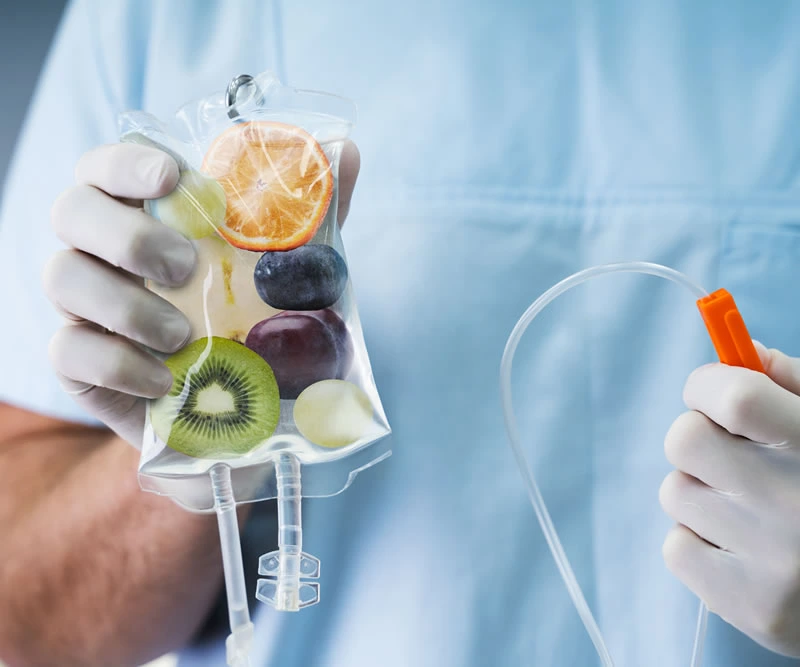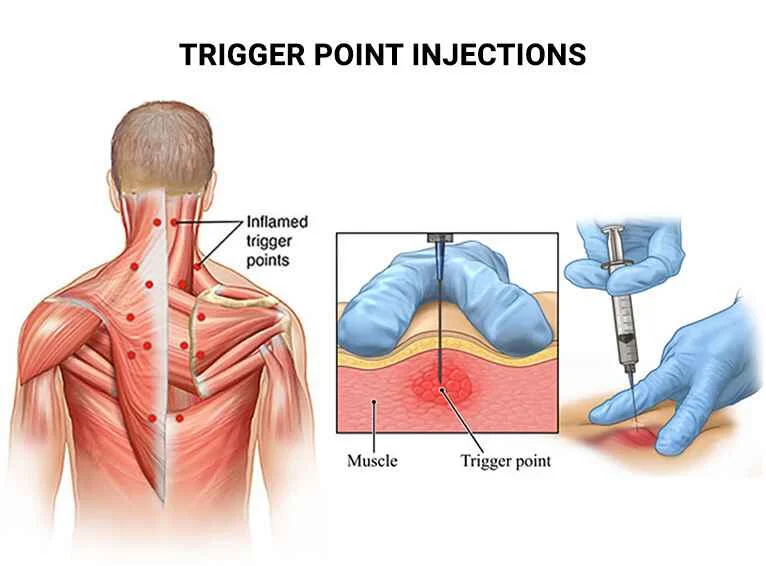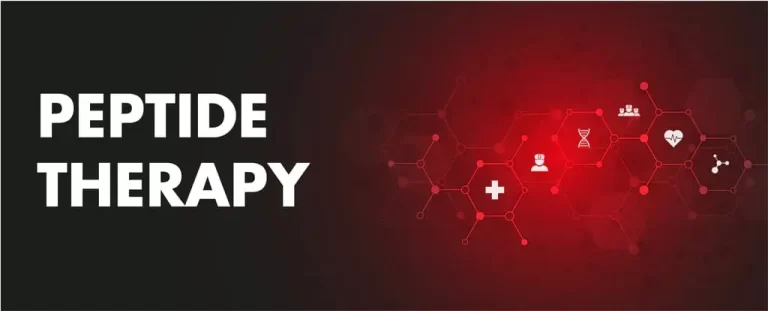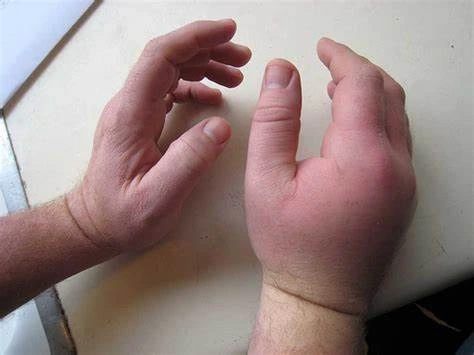Intravenous Vitamin Therapy (IVVT)
Intravenous (IV) vitamin therapy, also known as vitamin drip or infusion therapy, is a medical technique that involves delivering vitamins, minerals, and other nutrients directly into the bloodstream through an intravenous line. This method allows for the rapid and efficient absorption of essential nutrients, bypassing the digestive system.
The concept of IV vitamin therapy has gained popularity in recent years, not only among individuals seeking wellness and energy boosts but also in medical settings for the treatment of specific health conditions. The process typically involves a mixture of vitamins, minerals, amino acids, and other beneficial substances tailored to address individual needs.
Proponents of IV vitamin therapy claim various benefits, such as increased energy, improved immune function, hydration, and enhanced overall well-being. Additionally, this method is thought to be more effective in delivering nutrients to cells compared to oral supplements, as it ensures higher bioavailability.
What is IV Vitamin Therapy?
IV vitamin therapy involves introducing custom blends of vitamins, minerals, and antioxidants like glutathione into the body via an IV infusion. It requires inserting a needle into a vein, typically in the arm or hand, through which the nutrient mixture trickles in. Sessions generally last 30-60 minutes depending on the prescribed cocktail and desired effects.
Medical professionals like nurses, doctors, or naturopaths oversee the creation of proprietary IV vitamin blends which may contain ingredients like:
- Vitamin C
- B vitamins
- Magnesium
- Calcium
- Glutathione
- Zinc
- Anti-oxidant blends
The tailored combinations target specific health goals for each patient whether they seek immunity support, athletic recovery, migraine relief, or help overcoming chronic fatigue, all common reasons people pursue IV therapy.
Benefits of IV Vitamin Therapy
Bypassing the Digestive System
One major advantage of intravenous infusion involves bypassing the GI tract to deliver nutrients directly into the bloodstream. Oral vitamins must undergo digestion and absorption processes losing effectiveness along the way before reaching circulation. Approximately 20-50% of supplement ingredients survive that arduous journey. With IV introduction, 100% of vitamins administered infuse successfully without loss yielding faster, more potent benefits.
Higher Doses
IV therapy facilitates higher nutrient doses than people could reasonably consume (or that would be safe to ingest) in pill form. Large vitamin amounts can overwhelm the digestive tract causing adverse reactions like nausea or diarrhea.
However, introducing gradual, controlled doses intravenously allows patients to reap benefits from elevated concentrations. Things like intramuscular glutathione that boosts antioxidant status get excluded from tablets/capsules altogether due to poor oral bioavailability.
GI and Malabsorption Disorders
Individuals struggling with gastrointestinal issues or diseases interfering with nutrient absorption especially thrive with IV infusion. Problems like Crohn’s disease, irritable bowel syndrome, celiac, and chronic inflammation impede the body’s ability to digest and assimilate vitamins effectively through food and supplements. IV introduction offers effective relief.
Rapid Results
In addition to greater bioavailability, IV therapy leads to a quick onset of effects unlike capsules with delayed, erratic absorption. Many infused patients report increased vigor, mental clarity, and heightened immunity shortly after their session concludes when nutrient levels peak rapidly in the blood before gradually diminishing over days/weeks. This makes IV methods helpful for offsetting draining events in real-time.
Customization
Healthcare practitioners can specially customize IV therapy vitamin blends tailored to each patient’s unique deficiencies, health objectives, and lifestyle factors. Beyond stock formulas, customized ratios of vitamins, antioxidants, and anti-inflammatories are combined in an attempt to target the individual’s problem areas through the optimal cocktail.
Common Uses
Correcting Nutritional Deficiencies
Patients found critically lacking in lab tests for things like Vitamin B12, Vitamin D, iron, magnesium or glutathione often undergo IV regimens to replenish them avoiding sluggish oral routes. Repletion directly into veins helps those deficient rapidly achieve sufficiency when standard supplements fail them. Addressing shortcomings this way provides symptomatic relief.
Battling Fatigue
Since rapid infusion can perk up depleted energy levels in real time, IV vitamin cocktails commonly get deployed against exhaustion. From chronically tired people to burned-out executives seeking a pick-me-up, IV therapy offers a tempting (if pricey) way to quickly get the pep back in your step without waiting days or weeks for supplement pills to kick in. A blended vitamin jolt may counteract dietary inadequacies dragging you down.
Immunity Enhancement
Nutrients like Vitamin C and zinc bolster immune response helping thwart viruses and infections. When illness strikes or to avoid getting run down during peak cold/flu season, IV delivery shoots high doses of sickness-combatting agents into circulation activating cells that destroy pathogens and heal damage. Some seek this method when resistant illnesses won’t abate.
Stress Reduction
Chronically high cortisol and stress hormone levels deplete the body of crucial vitamins/minerals which then perpetuates more fatigue and anxiety. IV infusion attempts to flood stressed systems with cellular reinforcements to disrupt that vicious cycle. Anti-anxiety amino acids may incorporated alongside standard vitamins to calm wired nerves.
Injury Recovery
Healing from accidents, surgery, or bone breaks requires augmented nutrient intake for proper tissue repair. However surgery sometimes temporarily impairs digestion hampering nutrient assimilation from traditional sources. Pre and postoperative IV vitamin therapy has grown in popularity to ensure patients get exactly what they need to mend even with compromised gut function.
Athletic Edge
To push performance, some athletes utilize IV regimens to correct marginal deficiencies hampering their training. They also treat exercise as a destructive event acutely raising antioxidant/nutrient requirements. Pre-event cocktails aim to minimize impending workout oxidative damage while post-session blends target replenishment and accelerated recovery.
Assessing the Effectiveness
Proponents suggest IV vitamin therapy offers superior replenishment than you’d get swallowing supplements or eating vitamin-rich foods alone. By injecting vitamins directly into the bloodstream, higher concentrations can be achieved faster without relying on intestinal absorption. Some people report a rapid increase in energy, mental clarity, and vitality shortly after infusion.
However, the science on efficacy is inconclusive according to prominent groups like the Mayo Clinic. While IV therapy seems reasonably safe for most, evidence proving health benefits compared to traditional vitamin intake remains elusive. More research is still needed on this increasingly popular wellness practice.
Potential Pros
If using a reputable provider and proper dosing under medical supervision, possible advantages include:
- Immediate 100% absorption since digestion is not required
- Bypass issues like poor gut health or GI/absorption disorders
- Deliver higher potency vitamin doses than pills allow
- Treat acute, urgent nutritional deficiencies
- Offer customizable IV cocktail mixes based on patient needs
- Enhance diet and nutrition when increased intake is necessary
Potential Cons
Disadvantages might encompass:
- Out-of-pocket costs not covered by insurance (range $100-$500 per IV session)
- Possibility of side effects like infection, dizziness, or nausea
- Limited evidence proving efficacy over daily multivitamin use
- Lack of regulation in the IV therapy industry – practitioner competency varies
- Not an alternative to a healthy diet high in essential vitamins
Risks and Side Effects
While typically considered safe under proper medical care, intravenous vitamin infusion does carry some inherent risks and potential adverse reactions to note.
Infection
Any skin piercing procedure conveys infection risk however minimal. Healthcare providers follow strict disinfecting protocols around injection sites. Still, on rare occasions, underlying bacteria on the skin inadvertently enters through the IV catheter into the bloodstream causing dangerous infection.
Those with compromised immunity face heightened vulnerability. Signs of IV line infection include inflammation, redness, severe pain, or pus drainage from the vein access point.
Dizziness/Fainting
Rapid infusion of fluid into the veins can temporarily lower blood pressure or change serum osmolality triggering dizziness or brief loss of consciousness during an IV vitamin session. Typically mild and passing, practitioners can mitigate the likelihood by administering fluids slowly with the patient properly reclining. Underlying conditions like dehydration or cardiac issues may increase proneness.
Nausea/Vomiting
Chemical irritation of the gastrointestinal lining from high vitamin concentrations, especially vitamin C, may spur nausea or vomiting. While the nutrients bypass digestion and are delivered straight into circulation, some residual amounts likely end up in the stomach – particularly in cases of improper IV placement. Nausea usually resolves quickly on its own without treatment although anti-emetics gets dispensed as needed in severe cases.
Toxicity
Vitamins prove harmless at moderate levels the body simply excretes extra unused amounts. But improper concentrations ramp toxicity risk. One review estimated that 39% of observed IV vitamin adverse events involved dosing errors – often multi-fold above recommended limits. Toxicity usually manifests as acute side effects soon after infusion but massive overdoses could cause lasting organ damage or metabolic disorders over time through accumulation.
Health Condition Interactions
Numerous patient factors and medications may compound issues from intravenous vitamin therapy. Particular conditions requiring caution include:
- Kidney disorders – Excess vitamin doses not readily excreted
- History of organ transplant – Anti-rejection drugs often interfere
- Anticoagulant medications – Vitamin K thickens blood dangerously
- Cancer chemotherapy – Vitamins could impede treatment efficacy
- Diabetes – Chromium and other ingredients alter blood sugar levels
Because risks intensify among already ill patients with complex medication regimens, undergoing IV vitamin infusion to “boost” immunity or wellness during active disease requires extreme medical oversight. Otherwise, negative outcomes become increasingly likely.
Toxicity from excess vitamin intake rarely occurs under professional medical oversight although improper or negligent dosing could endanger patients.
Certain individuals should use extreme caution with IV vitamin therapy:
- Pregnant or breastfeeding women
- Those on prescription medications – drug/vitamin interactions possible
- People with chronic health conditions like kidney disease require strict nutrition management
- Patients who recently underwent surgery
Only certified practitioners like registered nurses who fully comprehend vitamin-drug interactions and safe dosing thresholds ought to administer treatment.
How Often is it Administered?
Frequency varies substantially depending on the patient’s underlying health, lifestyle factors, and treatment goals. Those with chronic fatigue or nutritional deficiencies may undergo more regular sessions like 1-2x weekly. Athletes tend to schedule IV therapy clusters around competitive events to accelerate performance both pre- and post-contest.
Most patients receiving IV vitamins for general wellness rather than correcting inadequacies find monthly sessions provide adequate immune system and vitality boosts. Practitioners also stress the importance of continuing daily oral vitamin regimens alongside periodic IV infusion given the therapy’s temporary replenishing effects.
Cost of Using IV Therapy
Brace yourself – IV vitamin therapy costs typically range from ₹7,500 to ₹30,000 per session in India, with most falling between ₹10,000 to ₹15,000 for higher-end cocktail blends.
Since IV infusions are considered an “elective” or cosmetic treatment, medical insurance does not provide coverage. All therapy fees must be paid fully out-of-pocket by patients, with no possibility of later reimbursement.
Some premium clinics or med spas offer discounted IV packages or loyalty programs to lower per-session costs for regular recurring customers. However, for middle-class Indians seeking a one-off vitamin infusion, the expenses can quickly move it into luxury territory rather than a health treatment within reach.
When evaluating affordability, know that frequency recommendations suggest most patients receive about 1 session per month for general wellness goals. Thus if you pay ₹12,500 monthly for IV vitamin therapy rather than relying on oral vitamin supplements costing ₹500-1500, costs tally up exponentially, making it an upper-class indulgence.
The Takeaway: Should You Try IV Vitamin Therapy?
For chronically deficient, fatigued people struggling to raise nutritional
intake through traditional oral methods alone, IV infusion may offer a helpful – albeit expensive – jumpstart alongside ongoing diet and lifestyle changes.
Yet benefits seem uncertain for healthy individuals already consuming balanced diets rich in bioavailable vitamins that don’t require urgent deficiency correction, especially given the steep out-of-pocket costs, time commitment, and injection discomfort IV therapy entails.
If you elect to undergo treatment, vet your practitioner thoroughly, understand all risks beforehand, and view IV vitamins as supplementary to ordinary dietary improvement for optimal wellness…NOT as an alluring quick fix to compensate for poor nutrition.
I hope this gives you a helpful starting point for your IV vitamin therapy blog article! Please let me know if you would like me to modify or expand on any part of it further.
Summary
IV vitamin therapy involves getting customized blends of vitamins, minerals, and antioxidants injected directly into the bloodstream via an IV infusion. Proponents believe it offers superior absorption compared to oral supplements given nutrients bypass digestion.
Common wellness treatment goals include correcting deficiencies, enhancing immunity, reducing fatigue, improving skin quality, accelerating injury recovery, relieving migraines, and amplifying athletic performance. Evidence proving measurable benefits over properly balanced nutrition remains limited though some patients do report increased energy after sessions.
Potential risks if improperly dosed include infection, nausea/vomiting, kidney stress, toxicity symptoms, and dangerous drug interactions. Lack of regulation among IV therapy practitioners causes concern – medical oversight is a must for safety along with conservative vitamin dosing.
FAQs
Why get nutrients through an IV infusion instead of taking supplements or vitamins from a diet?
IV therapy allows higher concentrations and rapid absorption directly into the blood without relying on digestion. This makes it helpful for those unable to assimilate enough nutrients orally.
How often would someone need to undergo IV vitamin therapy sessions?
Frequency depends on health status and treatment goals. For general wellness, monthly sessions are typical to maintain circulating nutrient levels while those overcoming illnesses may require 1-2 weekly infusions.
How long does an intravenous vitamin infusion session take?
A: The intravenous drip itself for introducing the vitamin solution takes 30-60 minutes on average. However total appointment time runs 60-90 minutes factoring in prep, vitals, IV placement, and post-care.
Is IV vitamin therapy FDA-approved and considered safe?
A: No FDA approval exists due to a lack of oversight and published evidence on efficacy. But when professionally administered and dosed correctly, it appears reasonably safe based on current data for most healthy individuals. Those with medical conditions warrant caution.
References
- Charmley, S. (2023, March 27). What to know about IV therapy. https://www.medicalnewstoday.com/articles/iv-therapy
- Shane-McWhorter, L. (2023, December 6). Intravenous Vitamin Therapy (Myers’ Cocktail). MSD Manual Consumer Version. https://www.msdmanuals.com/home/special-subjects/dietary-supplements-and-vitamins/intravenous-vitamin-therapy-myers-cocktail
- Ramella, A. (2022, December 13). IV Vitamin Therapy: Does It Work? WebMD. https://www.webmd.com/vitamins-and-supplements/iv-vitamin-therapy-does-it-work







